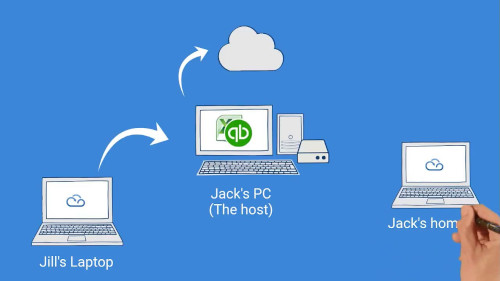There is no year that our view of the nature of work has been upended like in 2020.
When the pandemic hit, businesses around the globe scrambled to stay open and keep operations running by deploying remote technology at a scale.
If there is a topic we’re heard of this year, it’s remote work. If it hasn’t had an impact on you, it’s affected you in one way or the other.
From the sudden shift to struggling to have our feet on the ground and creating a work-life balance routine. And now, we are moving closer to another year of uncertainty.
We are grateful the dust is now settling and companies are in a position to see how effective their remote experiment has been. And also to see what must be done differently if the temporary fix becomes a permanent solution.
The World Economic Forum reported in the 2020 Future of Jobs Report that 44% of the global workforce can work remotely.
With the employee benefits associated with remote work, most people prefer to work remotely even after the COVID-19 crisis.
There are no signs of flexible working schedules or telecommuting declining any time soon. In fact, an article by Forbes predicted a minimum increase of 300% in the remote workforce.
With this in mind, businesses are on the lookout for ways that remote working arrangements can actually save them money.
So, can remote working be a cost-saving measure for businesses?
Let’s see how.
Higher retention rates
It is amazing how telecommuting is a huge contributing factor to employee satisfaction. A study by Global Workplace
Analytics revealed that 36% of 500 employees would prefer to have a flexible working schedule than a raise.
As if that’s not shocking, 37% of tech employees would take a 10% pay cut in exchange for working remotely.
A study by Staples Advantage also showed that remote employees reported better work-life balance and job satisfaction.
80% said they had better work-life balance while their stress levels were 25% lower than that of their on-site counterparts.
On average companies lose between $10,000-30,000 on every employee who quits. Remote work might just be your solution to retaining top talent and skills in the company.
Increased productivity
Research has shown that telecommuting employees work quite as much as on-site employees.
That is 53% in comparison to 28%. Don’t get it wrong. Not all telecommuting is productive.
The remote workforce that does repetitive and routine work has their productivity level at 6-10% less than non-telecommuting workers.
However, the rest of the remote workforce is super productive. According to the World Economic Forum, “Employees have understood what’s expected of them working from home – and been able to achieve it.
So people perceive themselves [working from home] as being very effective.
Over 70% of people would prefer a more flexible work model, with one or two days per week at least at home. Pre-COVID it was exactly the other way around.”
And the use of online productivity tools also contributes to the increase in productivity.
Lower overhead
Office-related costs including lease or mortgages, janitorial services, utilities, coffee and water expenses, furniture, and stationery, among others will all be significantly reduced.
According to the Global Workplace Analytics Report, employees save $11000 annually if they have a telecommuting schedule. So it’s a win-win for businesses and employees.
Ewen Stevenson, CFO HSBC said in an interview with Bloomberg, “It makes financial sense – more remote working can help reduce office costs.
This aligns with the digital shift in customer behavior as well. We’re seeing far higher levels of digital engagement than what we saw pre-COVID in some places.
This will allow us to be more assertive about reducing some of the physical distribution costs we’ve got.”
Less sick days
The Global Workplace Analytics report has proven that work from home employees are less likely to call in sick.
These employees eat healthier and have lower stress levels so they are healthier.
Personal issues and stress are huge contributing factors when it comes to employee absenteeism.
Telecommuting puts employees in a better position to deal with their personal issues and resume work immediately after.
Unscheduled absenteeism costs companies $1800 per worker annually. So instead of employees taking a day off they schedule work around their personal obligations.
Also, the spread of illnesses like coughs or flu is minimal when employees work from home. You won’t have your entire workforce taking sick days one after the other.
Also, employee wellbeing and health are the new business KPIs. And remote working is one of the ways for companies to focus on improving employee wellbeing for better performance.
A larger pool of talent
With a remote workforce, companies have the freedom to hire from different locations around the globe.
You get to pick the smartest talent that suits your company best regardless of where they are located in the world. This way, you have better innovative thinking and productivity.
Additionally, team collaboration tools have made location cease to matter in terms of employee collaboration.
They have made communication between employees and managers more transparent and highly effective saving businesses time and money.
This decentralizes work and distributes wealth and influence strengthening communities globally like never before.
Conclusion
The fact remains that work won’t return to the way it was before the pandemic.
Businesses that embrace remote working technologies are coming out more effective and efficient.
As we move into 2021, remote desktop and remote access technologies aren’t just a temporary fix, but permanent solutions to keeping your business thriving regardless of the circumstances.
Companies like MyQuickCloud ensure that you can seamlessly transition to a remote workforce and save money at the same time.
You get a ready-to-use remote infrastructure that all you need to do is plug in your company data and systems.
There is no better time to implement and sustain a remote working culture than now.





